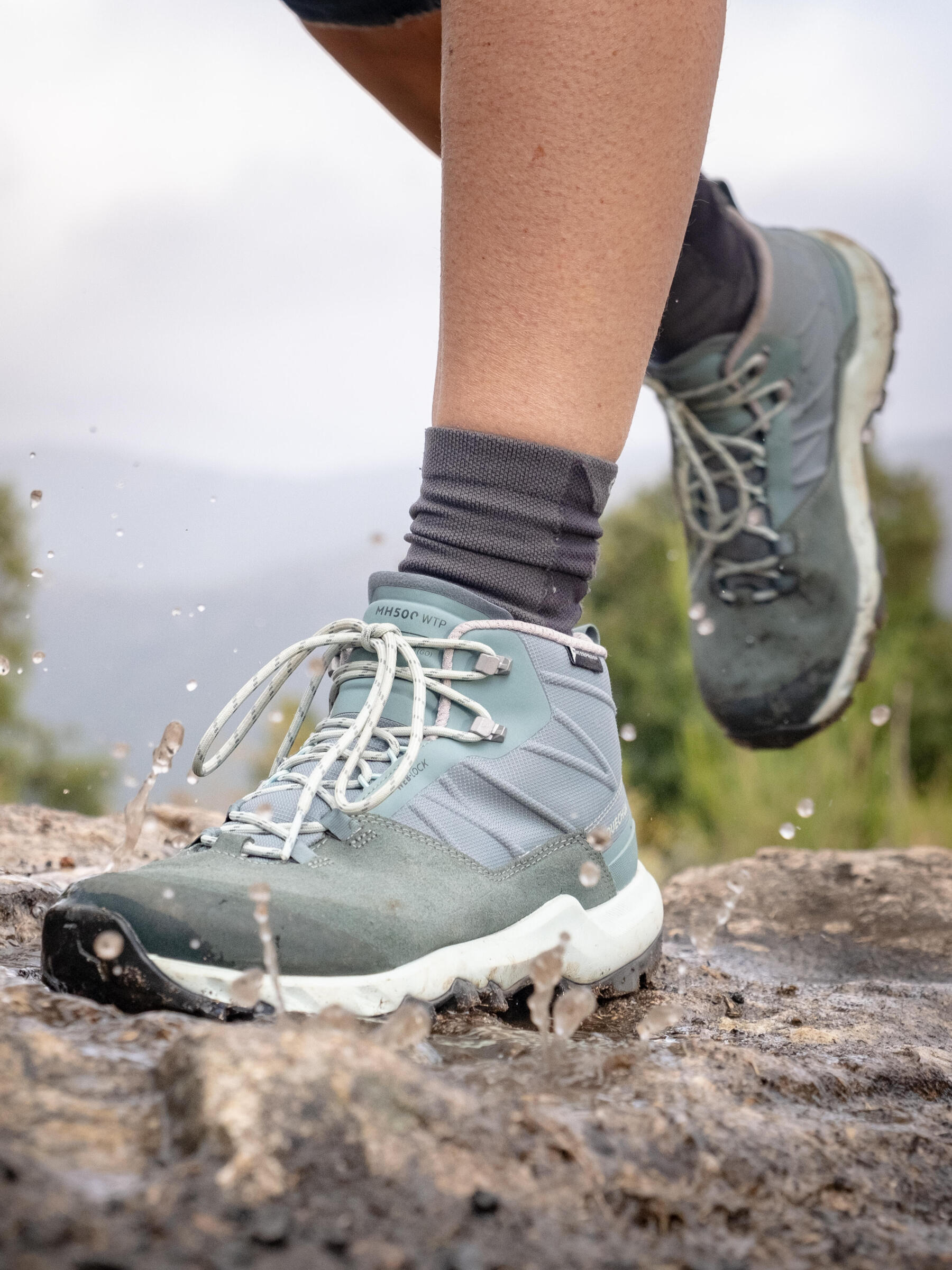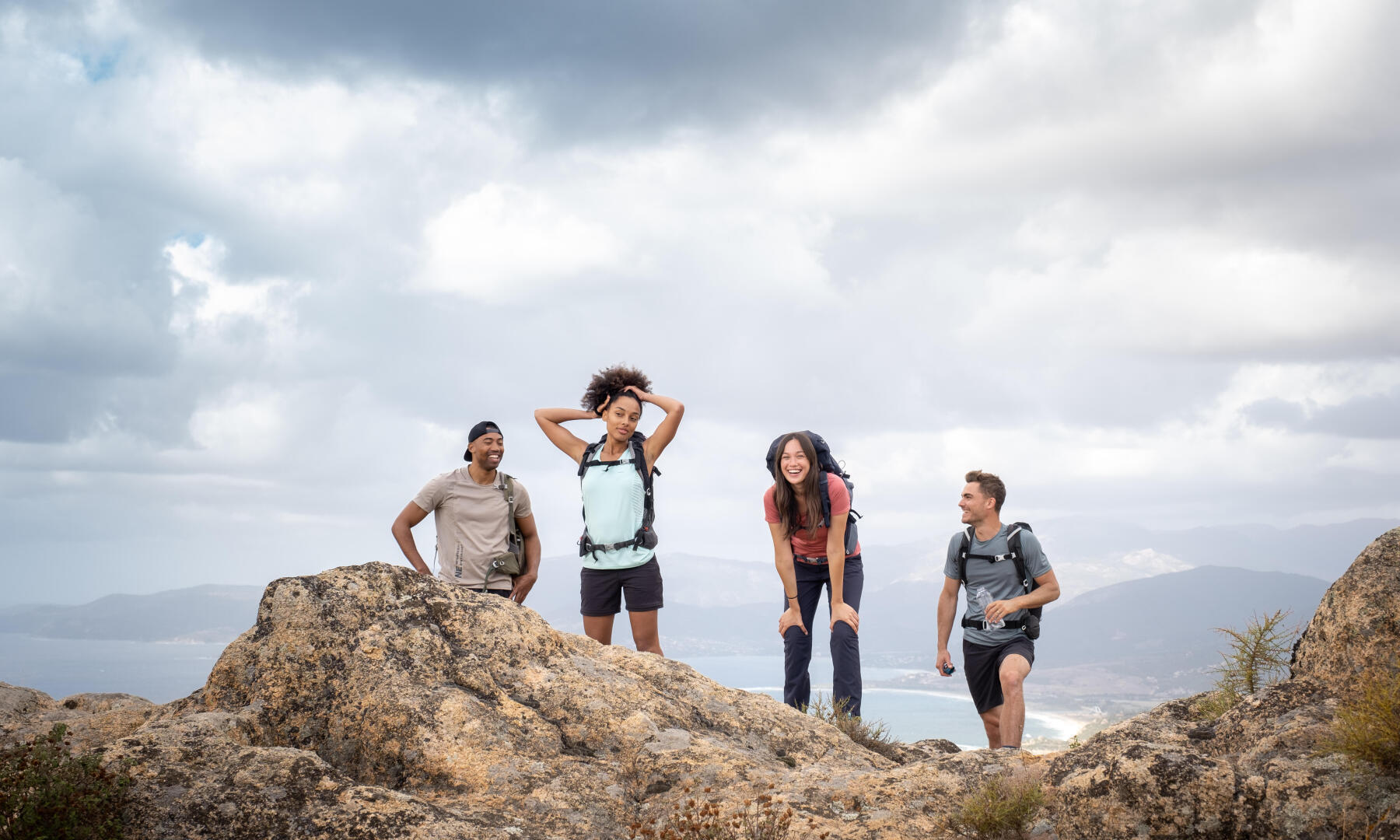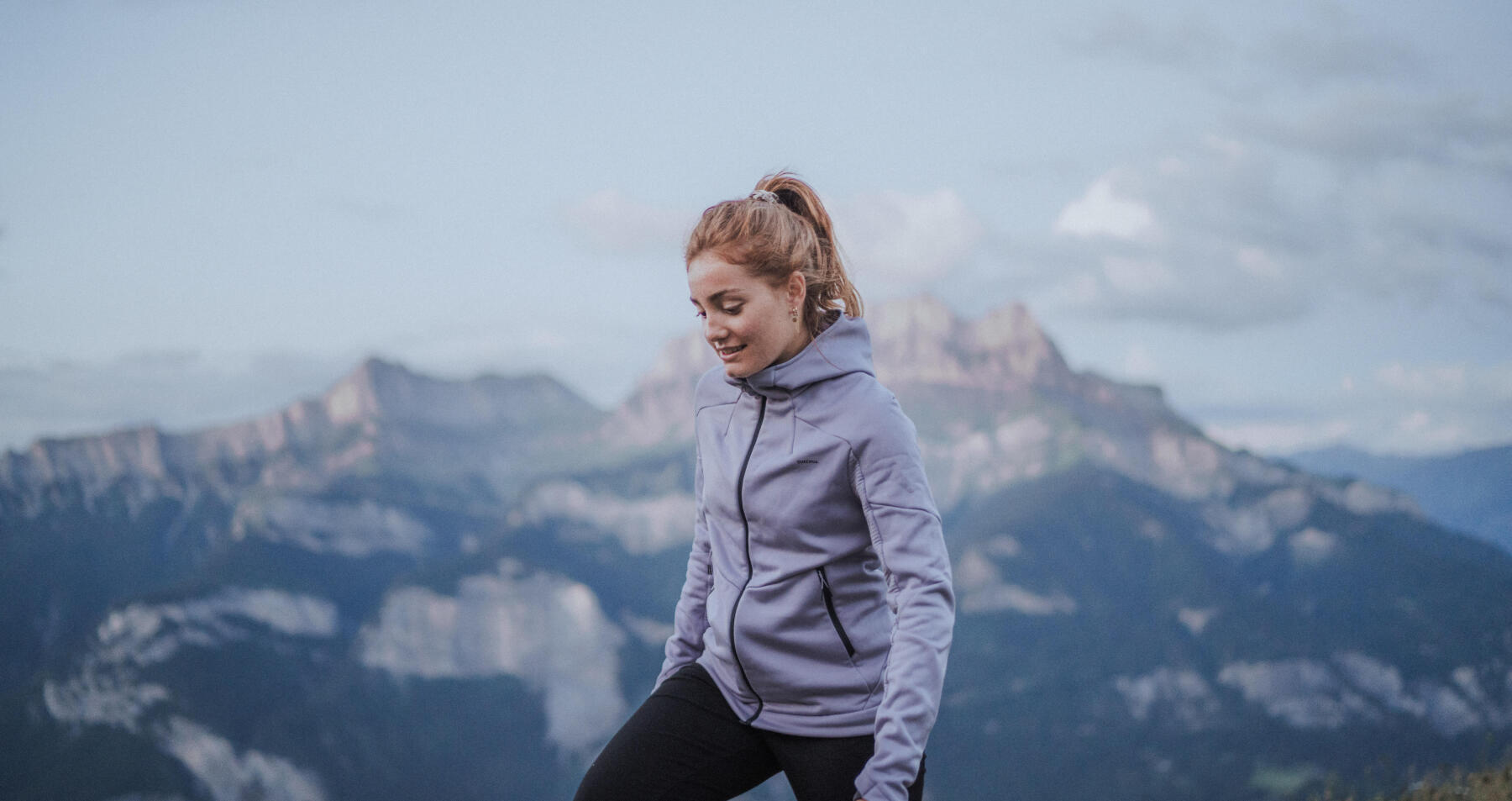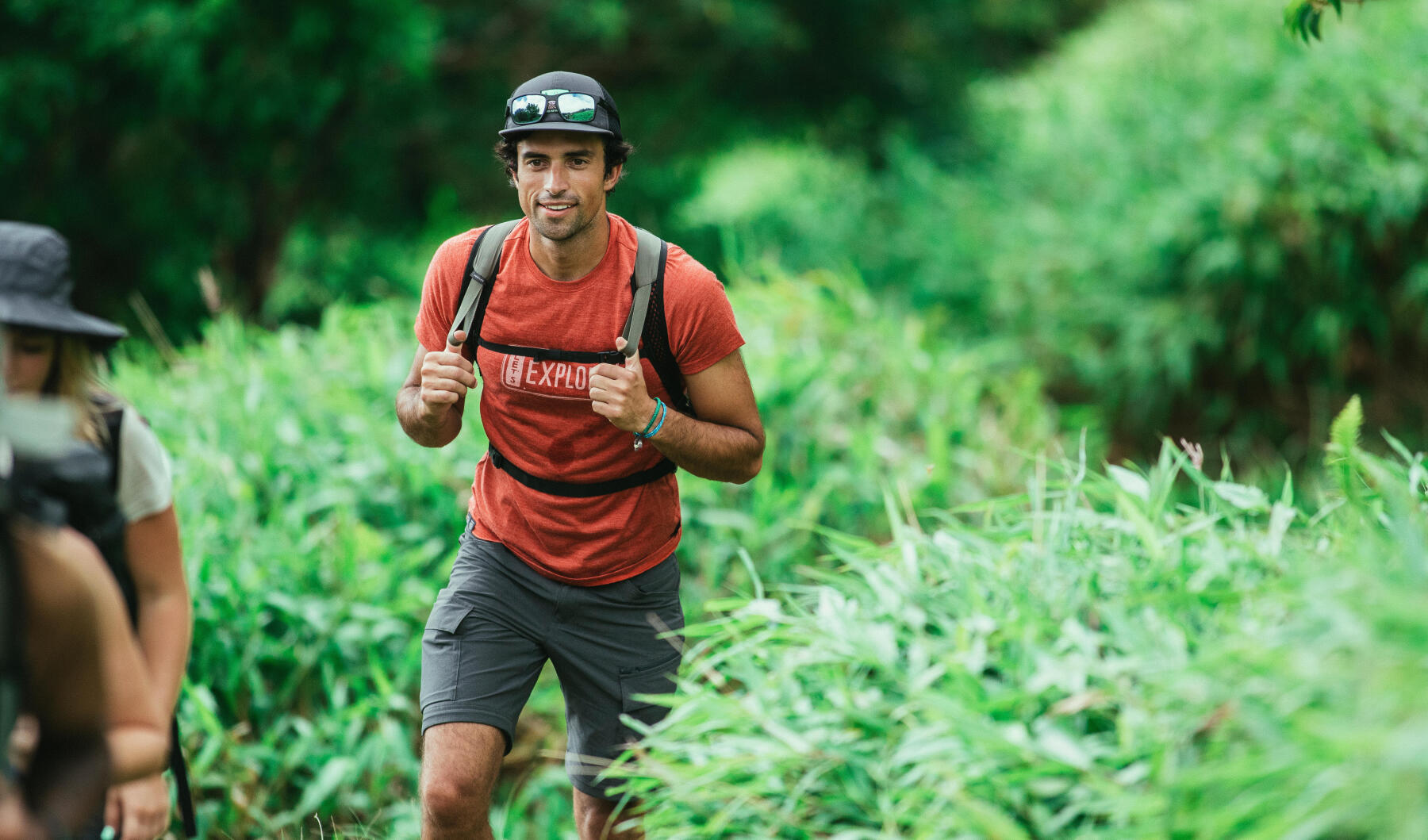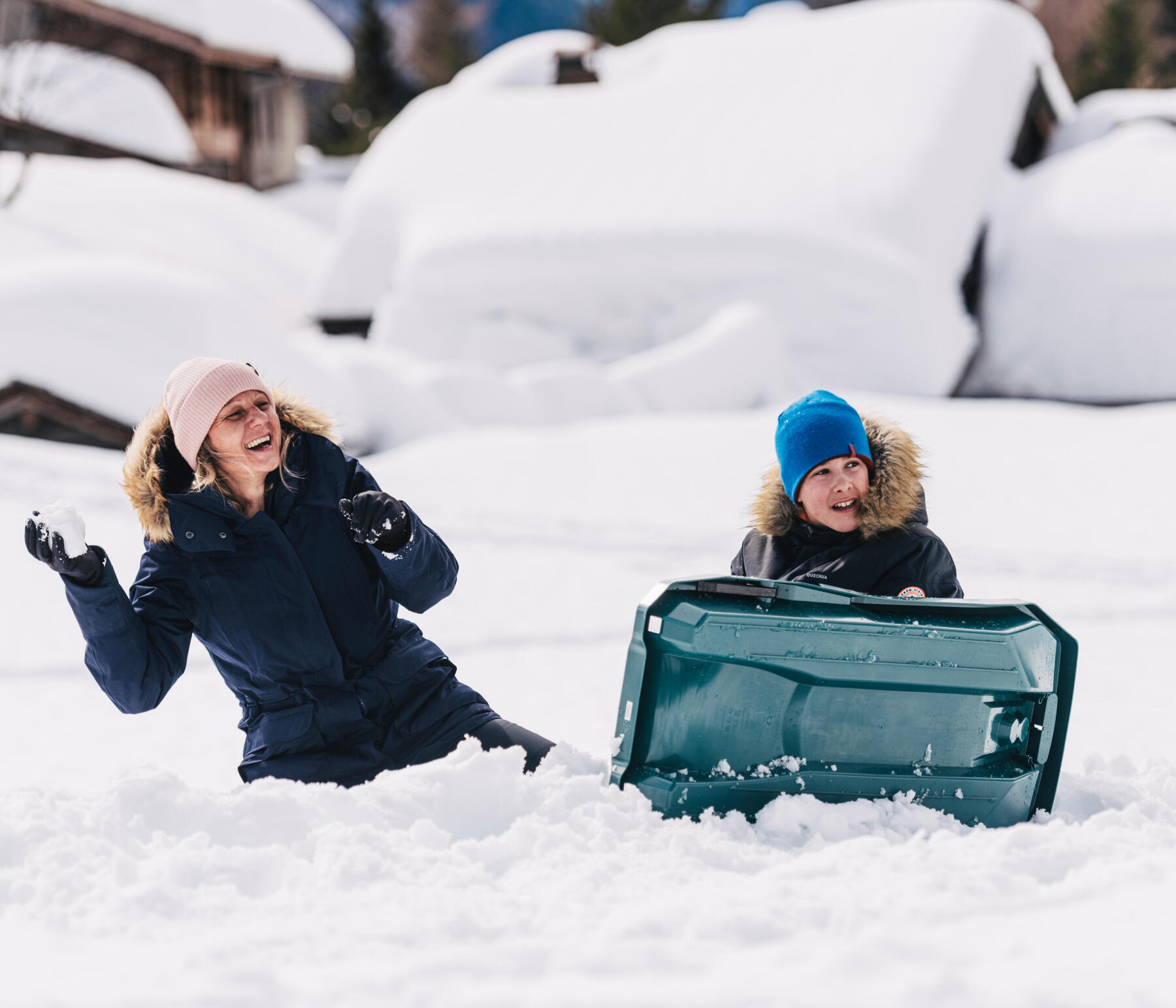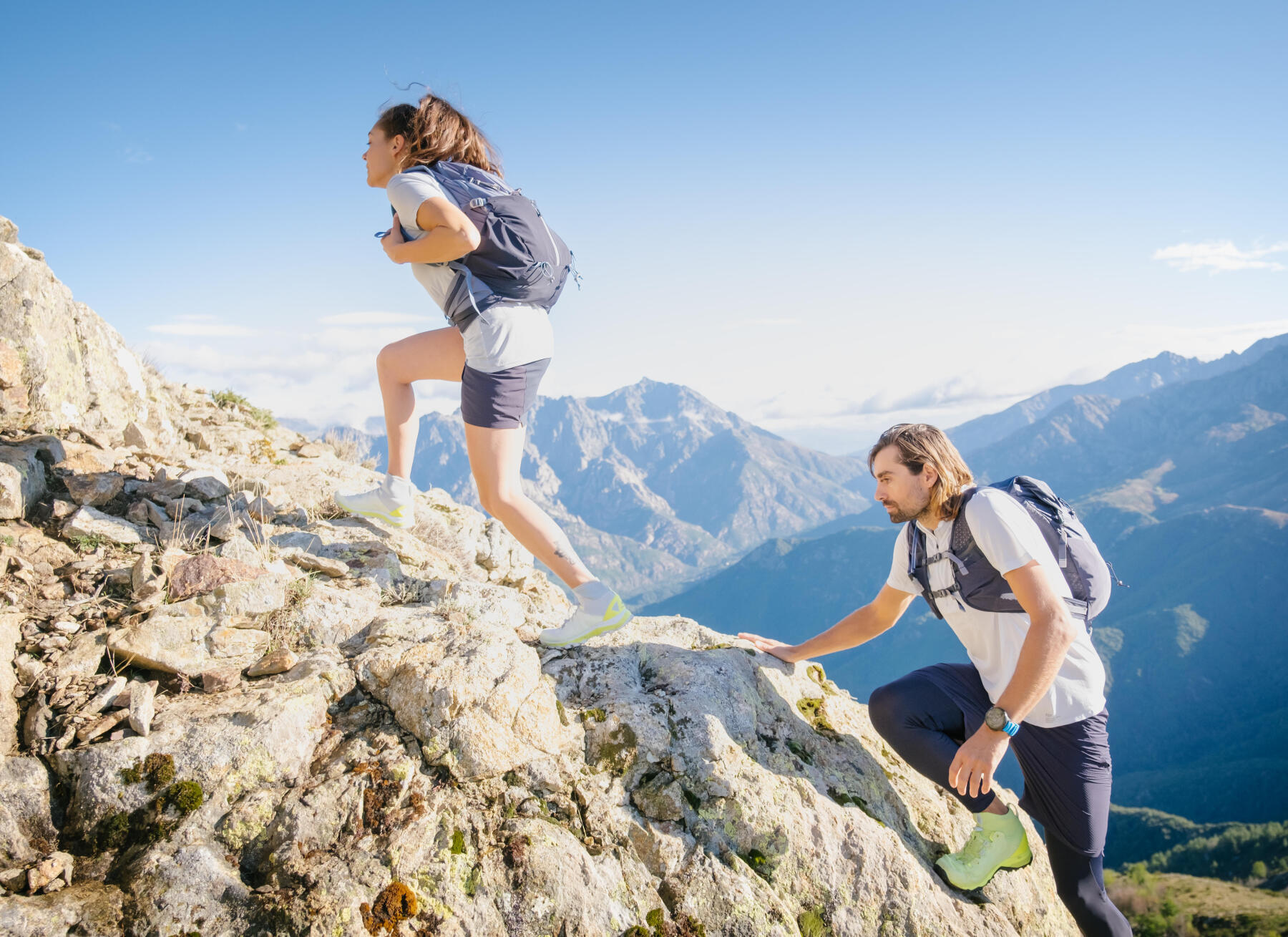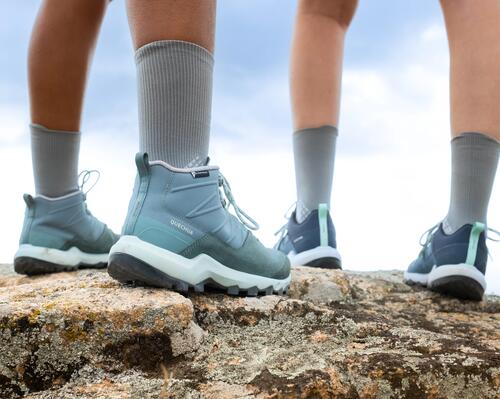Which shoes to wear for summer hiking?
Your hiking shoes should be suitable for the terrain you plan to hike on and the weather. And, of course, they should be comfortable.
You're going on a short hike, with no technical difficulties, and the weather is fine. You can opt for low, very light, mesh shoes. They will let your feet breathe well and wick away perspiration efficiently.
If you're going to be walking several kilometres over altitude for a few days, you'll need trekking shoes. With a high upper and waterproofing treatment, these shoes protect your feet from the rocks on the trail and the rain, while providing excellent support.
You're going out in uncertain weather for a few hours. You should opt for waterproof shoes with good cushioning to set off on the right foot!
For a walk in the forest or along the coast in summer, make the most of it by getting your toes out with sandals or ventilated shoes.
Find your perfect pair of shoes with our articles:

